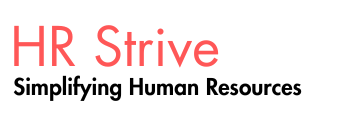Delivering a message effectively involves more than just content—it requires thoughtful decisions about the channel, setting, style, and timing to ensure the message resonates with the intended audience. The chosen communication method should reduce distractions, support clarity, and foster engagement. Being attuned to the audience’s responses is equally critical.
Though not every message demands intensive preparation, overlooking the planning process for complex or high-stakes communication can lead to misunderstanding and mistrust. Strong communicators develop intentional strategies, particularly for important or sensitive topics. Key factors to consider include:
1. Mode of Communication
Will the message be delivered face-to-face, over the phone, or in writing?
When the communicator is not physically present, it's harder to gauge audience reactions. In such cases, it's helpful to have others review the message in advance to flag areas that may cause confusion or trigger negative reactions. For example:
-
Sensitive issues: Best handled in person or via phone—not by email.
-
Detailed or technical topics: Should be paired with written materials for follow-up review.
-
Resource allocation decisions: May require a multi-phase approach—beginning with informal discussions, followed by formal presentations and documented communications.
2. Timing the Message
When to communicate can be just as important as what you say. In some situations, information should be shared in phases, releasing specific parts to different audiences at different times. HR professionals must also stay aware of the broader organizational landscape—what other announcements or events could compete for attention? Respecting time limits and being mindful of the audience's capacity to absorb information is essential.
3. Choosing the Location
For private or emotionally charged conversations, choose a confidential, quiet location. For group sessions or presentations, the environment should be:
-
Properly sized for the audience
-
Comfortable and free of noise
-
Well-ventilated and well-lit, ideally with natural light
All venues should minimize external distractions and interruptions to maintain focus.
4. Selecting the Messenger
Who delivers the message can greatly influence its reception. Depending on the situation, you may need:
-
A leader with authority to instill confidence
-
A technical expert to address complex questions
-
A skilled communicator who can listen, adapt, and respond to emotional cues with empathy and poise
5. Identifying Support Needs
Supporting resources can enhance message effectiveness. These may include:
-
Analysts to generate data or evidence
-
Designers to create visual aids or infographics
-
Administrative staff to handle logistics like printing or distribution
-
Communication coaches to refine delivery and presence
6. Choosing the Right Medium
The medium should match both the nature of the message and the audience’s comfort level. Consider factors like:
-
Literacy and comprehension levels
-
Access to devices or platforms
-
Time zone differences for global communication
Each medium—email, video, intranet, meetings, printed reports—has its own strengths and demands different planning strategies. HR professionals must match message content with the appropriate format to ensure clarity and reach.

No comments:
Post a Comment